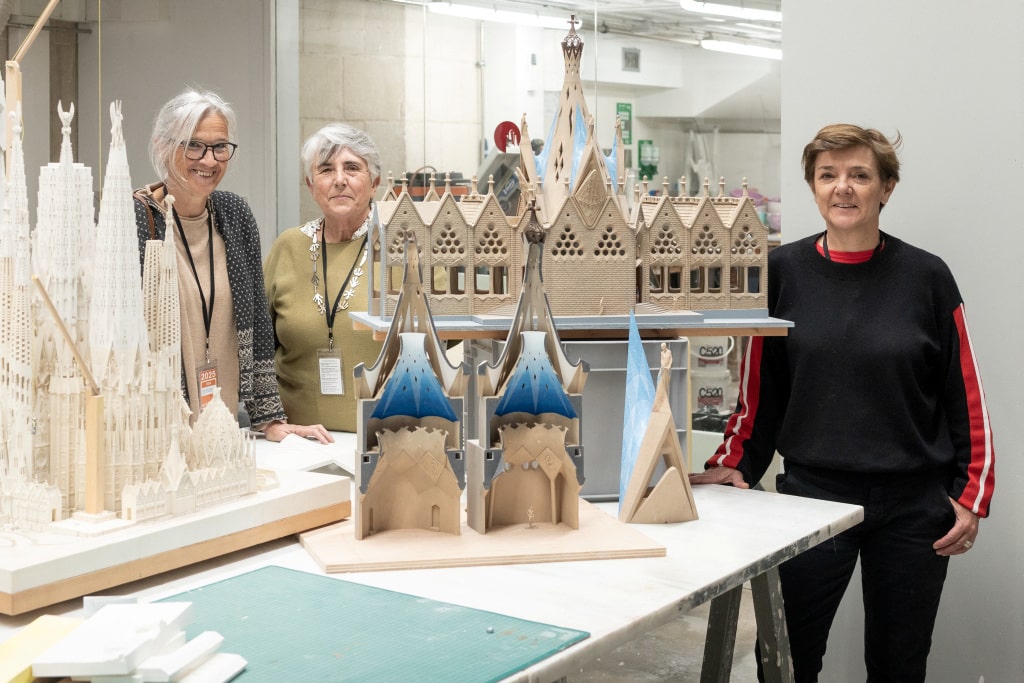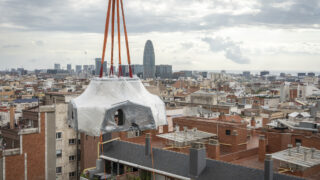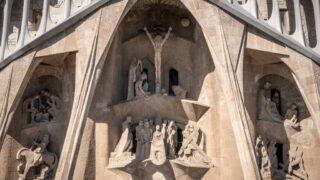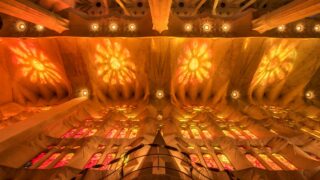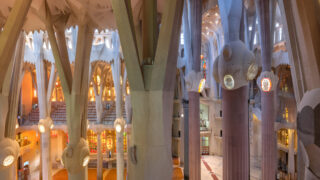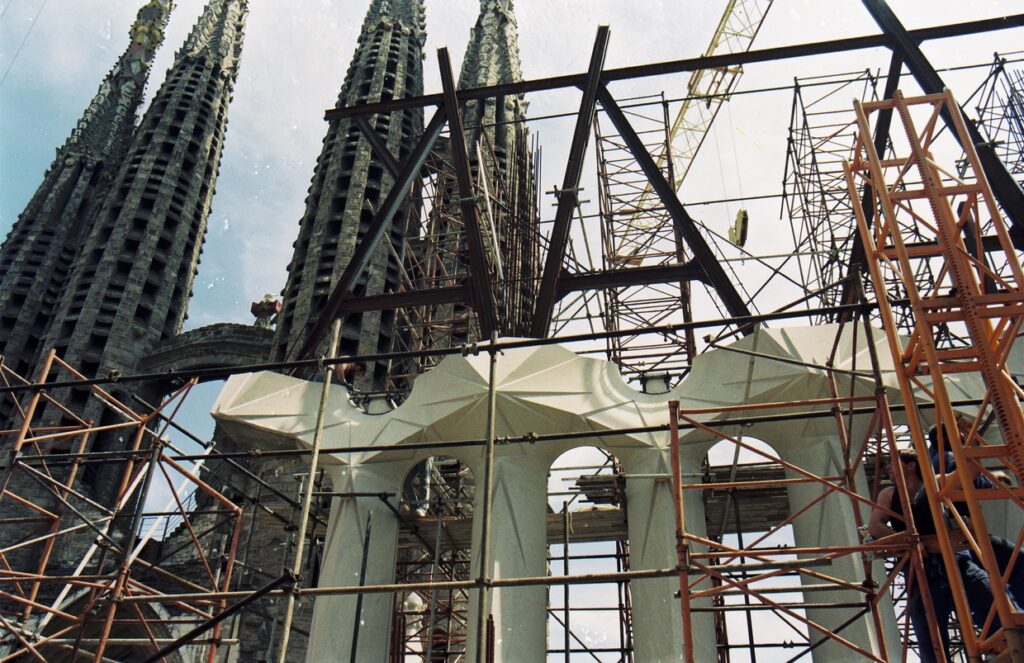Mercè Riba, Béatrice Bizot and Teresa Riba are the artists the Junta Constructora de la Sagrada Família has chosen to create the sculptures for the interior and exterior of the Chapel of the Assumption, which is currently being built in the centre of the adjoining cloister that runs parallel to Carrer de Provença. These figures are created through an interesting, elaborate process that starts with clay and ends with the final stone piece, with the sculptors working alongside model makers, architects and stonemasons.
Mercè Riba, whose great-grandfather was a sculptor who worked on the Nativity façade in Gaudí’s time, came up with the bas-reliefs for the interior, which illustrate four scenes from the life of the Virgin Mary. Riba also created the figure of Saint Joseph Oriol, which will be above one of the entrances to the Chapel of the Assumption. The other doorway will feature a sculpture of Saint Roch by Béatrice Bizot and Teresa Riba is creating the four angels holding up the blue mantel that represents the Virgin Mary.
For the first time, all three artists met at the Sagrada Família to discuss the sculptures and how they are being made. Xisco Llabrés, Basilica architect who is coordinating the Assumption project, was also there.
What went through your mind when you heard you had been chosen to create the sculptures for the Chapel of the Assumption?
Teresa (T): At first, I couldn’t believe it. It felt like a big responsibility and I was a bit nervous, but really excited too. You can’t let the magnitude of the Sagrada Família and everything around it paralyse you. You have to think about what you want to represent and get down to the essentials.
Béatrice (B): You have to stay calm in the face of this extremely important task. You’re just another artist at the Temple and you want to do your best.
Mercè (M): What worried me was choosing the right option, making sure the tone and meaning of the sculpture fit with the artistic, plastic and spiritual language of the Temple. Jordi Faulí told us the chapel had to be a place of refuge, contemplation and welcome.
How did you convey this idea of contemplation from the chapel in your sculptures?
(T): At first, it was hard for me to imagine sculptures of angels without wings, but then I thought they didn’t need them because there are other ways to fly: with imagination, joy, excitement, etc. I want the angels to convey the feeling and sense of accompanying the Virgin Mary, in line with Gaudí’s idea of uniting Heaven and earth.
(B): For me, it is important that Saint Roch conveys the same sense of welcoming warmth as the Church, just as he did with the people who needed it most. That’s why it’s important for him to look down, to communicate with anyone who walks into the chapel from the exterior.
(M): Saint Joseph Oriol and Saint Roch are both very dear to the people of Barcelona and their presence is clearly tied to the welcoming nature of the chapel.
For the reliefs, I wanted to connect four important moments from Mary’s life to our present day from a very human point of view. For people to find references to their own family in them, as this is who Gaudí dedicated the Temple to.
How do you integrate your work into the symbolic language of the Basilica?
(B): In the end, it’s like returning to the original intention of art in churches, which was to share the story of Christianity with people who couldn’t read, and we wanted to do this in a way that is straightforward, easy to understand.
Xisco Llabrés (X): that was Gaudí’s intention. He wanted to bring the liturgy to all the people, at a time when mass was still in Latin, like the changes the Second Vatican Council would later introduce in 1962. And that is what these sculptures do, incorporating classical iconography but expressing it through an attitude and feeling that makes it easy to grasp.
These sculptures are very relatable, and very expressive.
(M): We’ve moved from the Passion façade, which is harsh, static and full of bones, to more human figures that look directly at the visitor. It also helps that they are close to the ground and we can see their eyes.
(X): The angels hold up the mantle, the saints guard the doors and welcome people in... For the Chapel of the Assumption, the sculptures couldn’t be hard, they have to have the sense of movement the sculptors have given them.
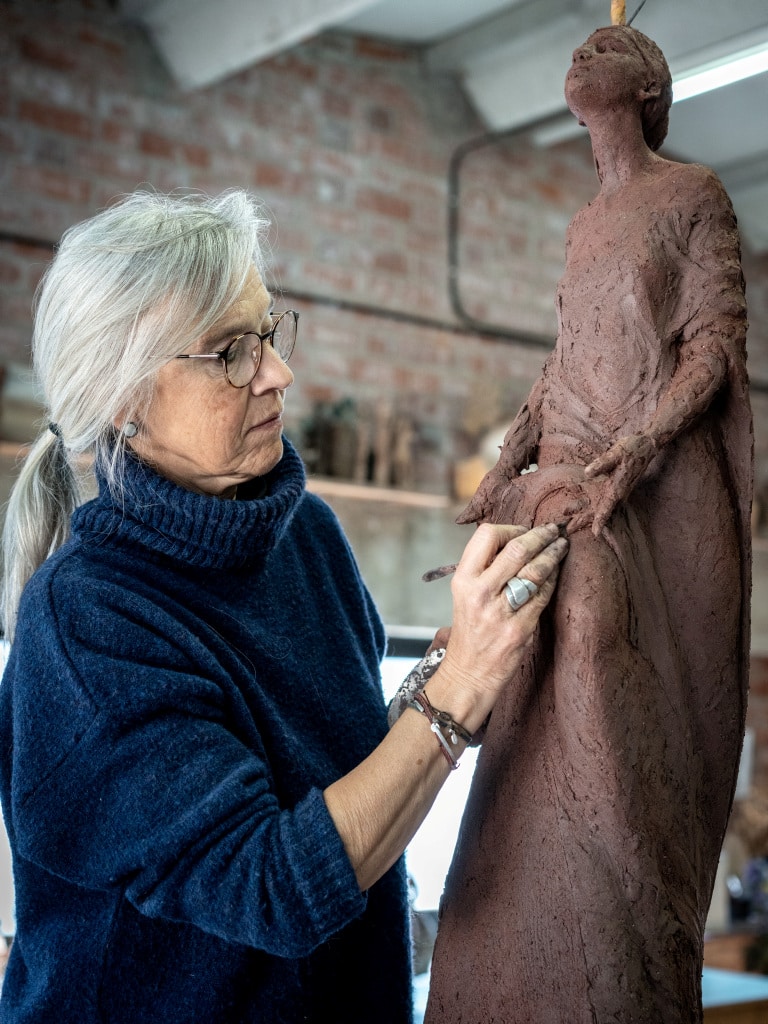

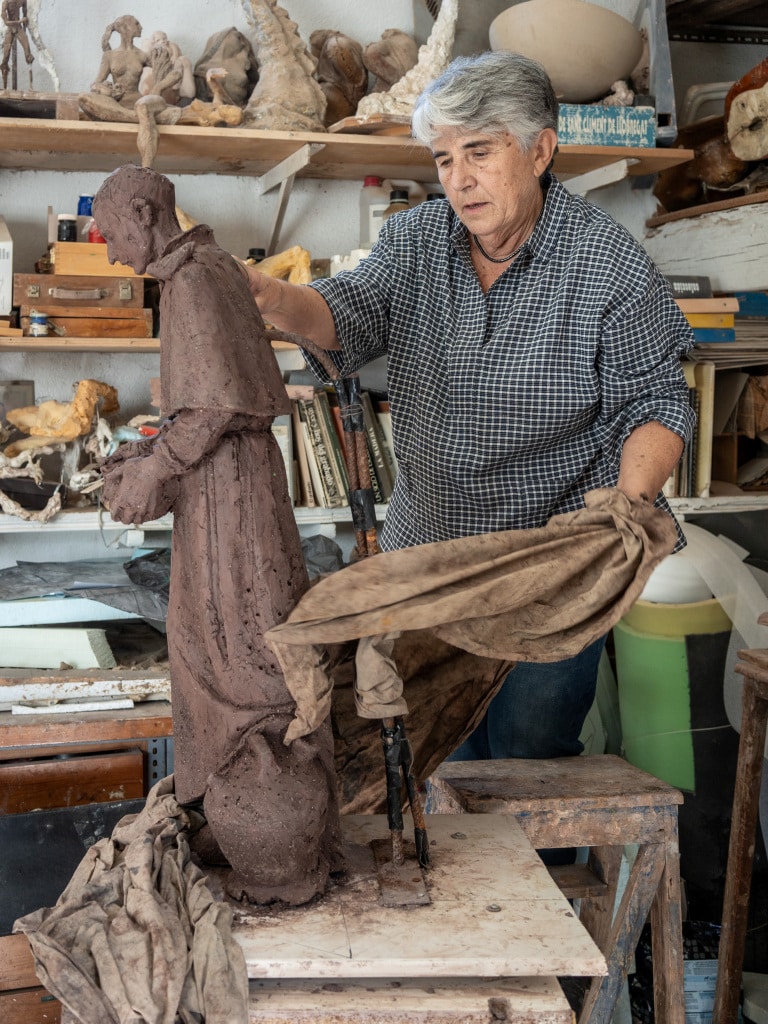
(In order): Teresa Riba, Béatrice Bizot and Mercè Riba working on the clay sculptures in their workshops
How can you say so much with a material like stone?
(T): With feeling. If you don’t feel, you can’t express. The Chapel of the Assumption is refuge, protection, motherhood... All of these concepts are expressed through feelings.
The Chapel of the Assumption is refuge, protection, motherhood... All of these concepts are expressed through feelings
How are the sculptures being created and how has the experience been for you?
(B): Behind each figure is an elaborate technique. Before reaching the final piece, there are many steps to scan, digitalise and adapt it. Our work is like a puzzle; all the pieces have to fit together perfectly.
(M): The Sagrada Família isn’t a gallery where you show your work. We are commissioned for a specific purpose and it has to fit with the work of so many people over so many years.
(T): The digitalisation is what impressed me the most. Seeing the piece floating without touching it, integrated with the rest of the elements.
Our sculptures have a specific purpose and they have to fit with the work of so many people over so many years
What challenges have you encountered?
(B): Adapting to a building where nothing is straight (they laugh), and seeing how to fit your sculpture with the rest of the construction.
(M): It has been a long road from the initial project to the final result. And that means you have to adapt to anything that may come up. Working in stone is also a challenge, because adding material, like when you work with bronze, is very different from removing it.
What does art mean to you?
(M): I spend all day thinking up sculptures. It’s part of who I am.
(T): Art is a need we all share, like love or breathing. Creativity is human. If you aren’t creative, you feel dead inside. We have to defend creativity and not let anyone take it away from us.
(B): Yes. This creativity is a need that just comes and you don’t know where from. This constant observation of forms brings you to life. It’s very mysterious.
(M): I think art is a way of existing in the world. When you’re with an artwork, you’re thinking about your own things: you get angry with the piece or you’re amazed...
(T): Exactly, it’s a mirror of who you are and of the world too.
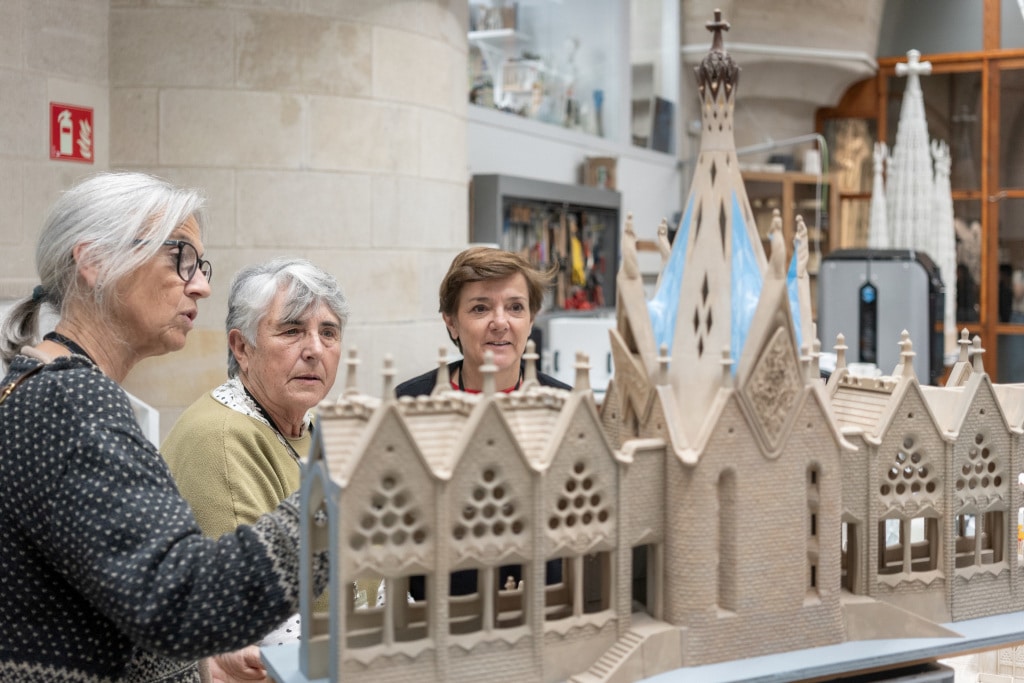
(From left to right): Teresa Riba, Mercè Riba and Béatrice Bizot discussing the model of the Chapel of the Assumption in the Sagrada Família model workshop

